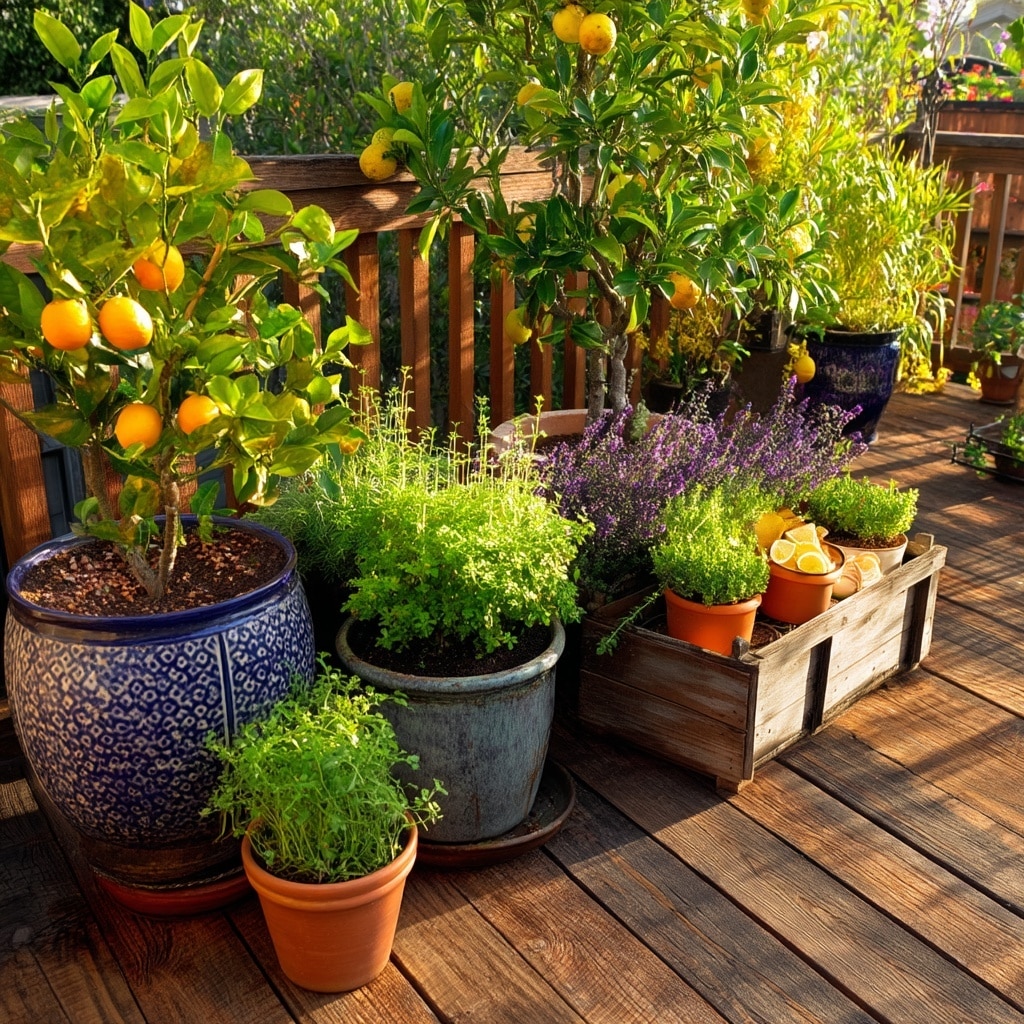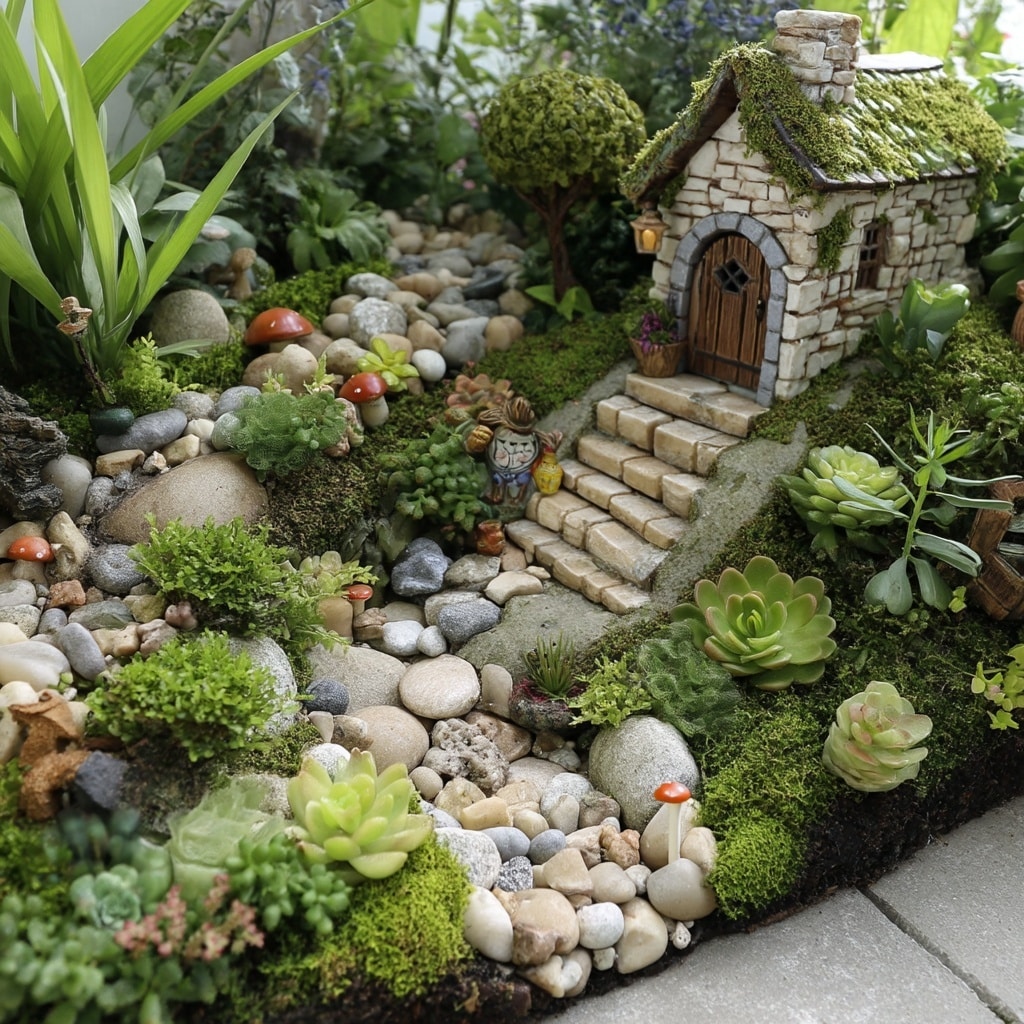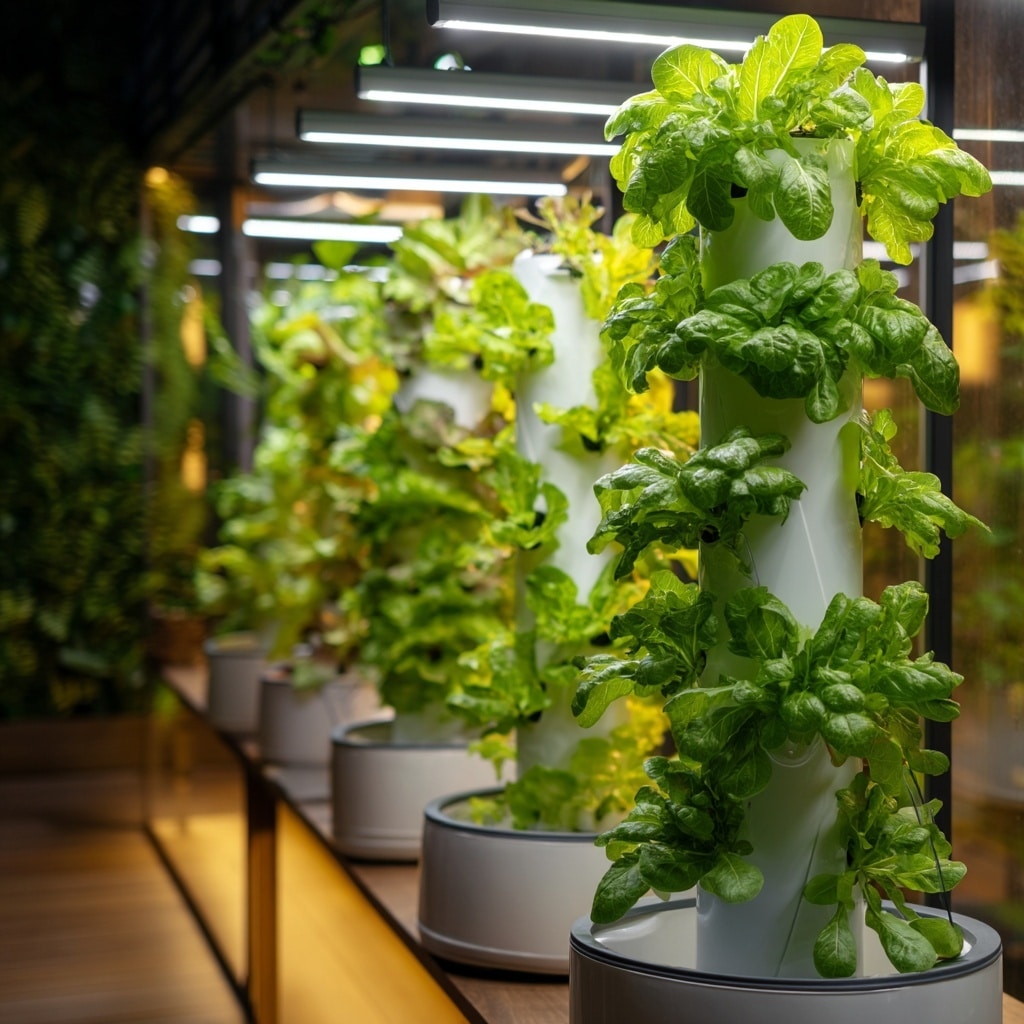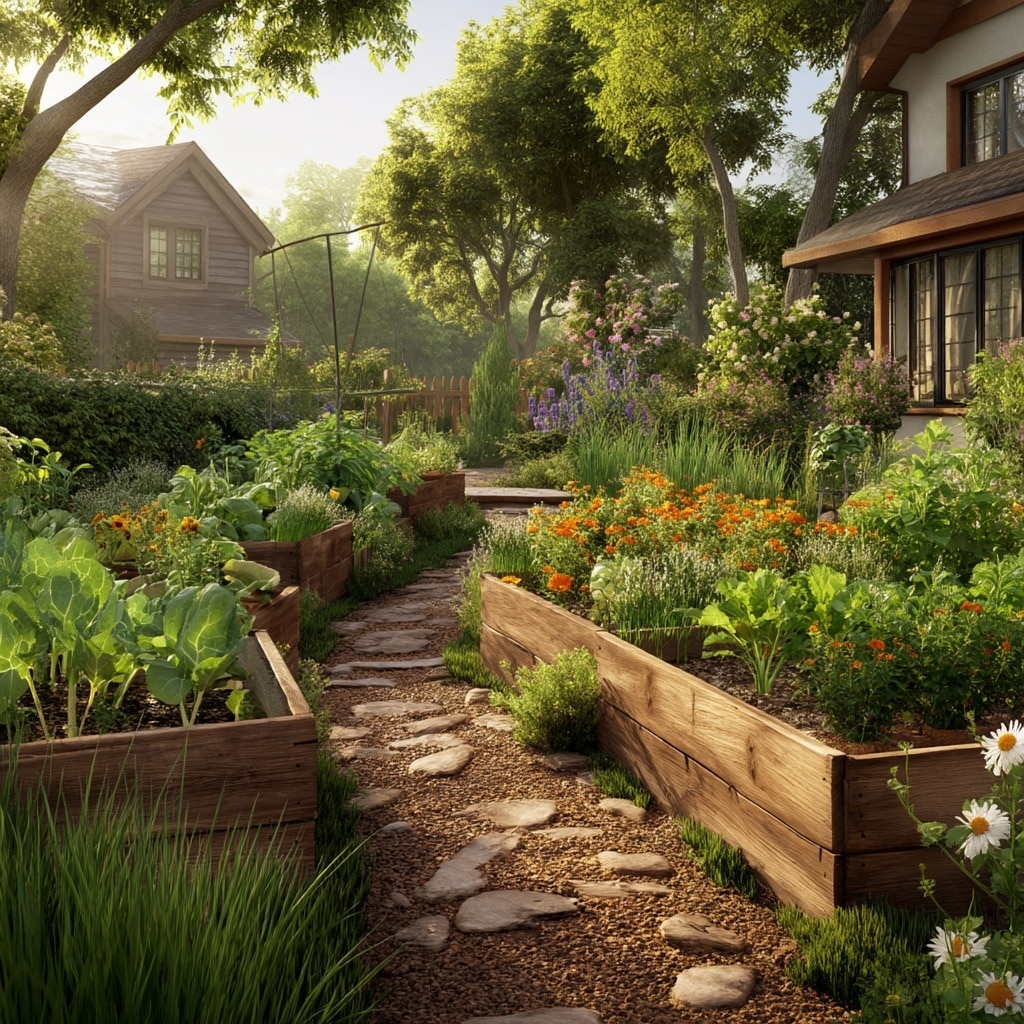Home garden spaces have become more than just patches of green—they’re personal retreats, productive food sources, and a way to reconnect with nature. Whether you have a large backyard or a small balcony, a thoughtfully designed home garden can boost your mood, add curb appeal, and even reduce grocery bills. The beauty of creating your own garden lies in its flexibility. From container setups to fairy garden corners, there are endless ways to shape a space that fits your lifestyle, aesthetics, and environment.
In this article, we’ll walk through 10 of the best home garden ideas to help you elevate your outdoor (or even indoor) space. Each idea is practical, creative, and easy to personalize, whether you’re a seasoned gardener or just starting out.
Table of Contents
Why You Should Have a Home Garden
Creating a home garden goes far beyond aesthetics—it’s a lifestyle choice that brings mental, physical, and environmental benefits. At its core, a garden can serve as your own peaceful escape, a place to unwind after a long day. The act of gardening itself has been shown to reduce stress, boost mood, and improve mindfulness.
But there’s also a practical side. A well-planned home garden can supply you with fresh herbs, vegetables, or even fruits, helping you eat healthier and cut down on grocery costs. You also gain control over what goes into your food, avoiding harmful pesticides or chemicals often found in store-bought produce.
Environmentally, your garden plays a role in sustainability. It supports biodiversity by attracting bees, butterflies, and birds, and improves air quality by increasing green cover. Whether you’re working with a sprawling backyard or a compact balcony, incorporating plants into your daily surroundings offers big returns on a small investment.
Lastly, a thoughtfully curated home garden increases your home’s curb appeal and value—something every homeowner can appreciate.
Vertical Gardens: Maximizing Small Spaces

If you’re working with limited space, a home garden can still thrive—just think vertically. Vertical gardens are a smart solution for apartments, patios, or narrow backyards where horizontal space is tight. By growing plants upward instead of outward, you can transform bare walls, fences, or balcony railings into lush green zones.
Trellises, wall planters, hanging baskets, and modular vertical systems allow you to grow everything from herbs and flowers to small vegetables like cherry tomatoes or peppers. For an added touch, consider training climbing plants such as ivy, jasmine, or beans along sturdy structures for a living green wall effect.
To ensure success, pay attention to sunlight and watering. Vertical setups often dry out faster, so drip irrigation or self-watering planters can be helpful. Also, choose plants with similar light and water needs to keep maintenance simple.
With the right planning, vertical gardening turns even the smallest home garden into a vibrant and functional space bursting with life.
Indoor Herb Gardens: Fresh Flavors at Your Fingertips

Even if you don’t have outdoor space, your home garden can thrive indoors—especially with an herb garden. Indoor herb gardens are not only convenient for cooking, but they also add a refreshing touch of greenery to kitchens, windowsills, or countertops.
All you need is a sunny spot, like a south-facing window, and a few small containers or mason jars. Popular herbs such as basil, mint, rosemary, thyme, and parsley grow well indoors and are surprisingly low-maintenance. These herbs not only look charming but provide immediate access to fresh, flavorful ingredients for your meals.
Start with seeds or starter plants depending on your confidence level. Use well-draining soil, and water only when the top inch feels dry. Rotate the pots occasionally so all sides receive sunlight evenly, encouraging balanced growth.
An indoor herb garden brings both practicality and beauty to your home garden, especially for apartment dwellers or those with limited outdoor access.
Container Gardening: Versatile and Mobile Solutions

One of the most adaptable ways to build a home garden is through container gardening. Whether you’re working with a patio, balcony, porch, or even a sunny windowsill, containers allow you to bring life to any corner of your home.
From colorful ceramic pots to repurposed buckets or wooden crates, almost anything can become a planter. The mobility of containers means you can easily rearrange your garden as seasons change or when plants need more (or less) sunlight. It’s also a perfect solution for renters who can’t alter permanent landscaping.
Container gardening works well for flowers, herbs, vegetables, and even dwarf fruit trees. Think vibrant marigolds, fragrant lavender, juicy cherry tomatoes, or compact lemon trees—all within reach in your personalized setup.
For best results, use quality potting mix, ensure proper drainage holes, and choose containers that are the right size for each plant. Mixing and matching different pot sizes and plant heights adds texture and depth to your overall home garden design.
Fairy Gardens: Whimsical Touches for All Ages

If you’re looking to add a playful and creative element to your home garden, fairy gardens are a charming option. These miniature landscapes are designed to look like tiny magical worlds, complete with small plants, decorative paths, and whimsical accessories like fairy figurines, miniature houses, or even little garden tools.
Fairy gardens are perfect for unused nooks or neglected corners. You can build them in shallow containers, tree stumps, or directly in the soil. Ideal plants include small, low-growing varieties such as baby’s tears, moss, mini ferns, and tiny succulents—all of which maintain scale and require minimal upkeep.
Creating a fairy garden can be a fun activity for both kids and adults. It encourages imagination, hands-on creativity, and can even become a meditative hobby. Plus, these tiny gardens blend seamlessly into any part of your larger home garden, adding personality and unexpected charm.
Succulent Gardens: Low-Maintenance Beauty

For gardeners who want a stylish look without the daily upkeep, a succulent garden is a perfect addition to any home garden. Succulents come in a wide variety of shapes, sizes, and colors—ranging from soft pastels to bold greens and deep purples—making them ideal for creating eye-catching displays.
One of the biggest perks? They’re incredibly low-maintenance. Succulents store water in their leaves, so they require minimal watering and can thrive in dry or sunny conditions. This makes them perfect for busy homeowners or areas with water restrictions.
You can plant succulents in shallow containers, rock gardens, or even vertical wall frames. Grouping different textures and tones together creates a visually rich, contemporary look. To elevate the aesthetic even further, surround them with gravel, driftwood, or decorative stones for contrast and drainage.
Succulent gardens are a modern, elegant way to bring life into your home garden, especially if you’re short on time or new to gardening.
Butterfly Gardens: Attracting Nature’s Beauties

Adding a butterfly garden to your home garden not only enhances its beauty but also supports local ecosystems. These delicate pollinators bring movement, color, and life to your outdoor space, making every garden moment more enjoyable.
To attract butterflies, plant nectar-rich flowers like milkweed, zinnias, marigolds, and coneflowers. These blooms provide the fuel butterflies need throughout the season. Native plants are especially effective, as they’re well-suited to your local climate and more likely to support native species.
Butterflies also need places to rest and drink. Include flat stones where they can sunbathe and shallow dishes of water or damp sand for hydration. Avoid pesticides and opt for organic gardening methods to protect both butterflies and other beneficial insects.
By dedicating a corner of your home garden to butterfly-friendly plants and features, you create a peaceful, interactive space that benefits both you and the environment.
Edible Landscaping: Gardening Meets Aesthetics

Why choose between beauty and practicality when your home garden can offer both? Edible landscaping blends ornamental design with the function of growing food. It’s a clever way to turn your outdoor space into something both nourishing and visually appealing.
Instead of traditional shrubs or groundcover, consider planting colorful vegetables, herbs, and edible flowers. Think purple kale, rainbow chard, trailing strawberries, or vibrant nasturtiums. These not only serve up fresh ingredients for your meals but also add dynamic textures and hues to your garden beds.
Strategic companion planting—pairing plants that help each other grow—can also improve productivity and reduce pests. For example, basil planted near tomatoes can enhance flavor and deter bugs. Structuring your layout with taller plants like trellised beans or cucumbers at the back adds height, while low growers like lettuce fill in the front.
Edible landscaping is a smart way to make your home garden a feast for the eyes and the table, without sacrificing style or space.
Raised Bed Gardens: Efficiency and Accessibility

A raised bed garden is one of the most effective ways to structure your home garden for better control, efficiency, and accessibility. Whether you’re working with poor soil conditions or just want a tidier look, raised beds offer numerous benefits for gardeners of all skill levels.
By building a frame with wood, bricks, or recycled materials and filling it with high-quality soil and compost, you can create the perfect growing environment. Raised beds improve drainage, prevent soil compaction, and make it easier to manage weeds and pests. Plus, they warm up faster in spring, allowing for an earlier start to the growing season.
For those with limited mobility, raised beds reduce the need to bend or kneel, making gardening more comfortable and inclusive. They also create clean lines and zones in your home garden, giving the space a more organized and purposeful appearance.
Whether you grow herbs, veggies, or flowers, raised beds are a practical and beautiful way to elevate your garden—literally and visually.
Pollinator Gardens: Supporting Essential Wildlife

A thriving home garden does more than look good—it plays a vital role in supporting the environment. Pollinator gardens are designed to attract bees, butterflies, hummingbirds, and other beneficial insects that are essential for healthy ecosystems and food production.
To build a pollinator-friendly space, plant a mix of native wildflowers and blooming plants that offer nectar throughout the growing season. Look for varieties that bloom at different times—early spring to late fall—to provide consistent food sources.
Include diverse plant heights and structures, such as tall flower spikes, low-growing groundcovers, and climbing vines. This variety appeals to different types of pollinators and adds depth to your home garden layout. Avoid pesticides, which can harm the very insects you’re trying to attract, and instead focus on organic methods.
Simple additions like a birdbath, a shallow water dish with pebbles, or a few sunny rocks for resting can make a big difference in creating a welcoming pollinator haven.
By dedicating even a small section of your garden to pollinators, you support biodiversity and boost the overall health of your garden space.
Hydroponics: Soil-less Growing for Urban Spaces

If you’re tight on space or interested in more controlled growing conditions, hydroponics offers an innovative way to cultivate a home garden—without soil. This method uses nutrient-rich water solutions to grow plants, making it perfect for balconies, indoor setups, or rooftops where traditional gardening isn’t feasible.
Hydroponic systems range from simple DIY jars to more advanced vertical towers. Leafy greens like lettuce, spinach, and herbs such as basil and mint thrive in these systems. Because the roots are suspended in water, plants receive direct access to nutrients, often resulting in faster growth and higher yields.
This method also reduces water waste and eliminates many soil-borne diseases, making it a cleaner and more sustainable option. If you’re short on time or live in an urban apartment, hydroponics can be your entry point into growing a productive home garden in even the most unconventional spaces.
Pair your system with grow lights or place it near a sunny window to keep plants healthy year-round.
Conclusion
Designing a home garden doesn’t require acres of space or a green thumb—it just takes creativity, planning, and a bit of care. Whether you’re stacking planters for a vertical garden, planting a butterfly-friendly corner, or starting a hydroponic herb setup in your kitchen, each idea brings beauty and function to your daily life.
Your garden can be whimsical, productive, low-maintenance, or eco-friendly—or all of the above. The key is to tailor it to your space, lifestyle, and personal taste. Start small, experiment with what brings you joy, and let your home garden grow with you over time.
No matter where you live, there’s always a way to make your own patch of green feel like home.






